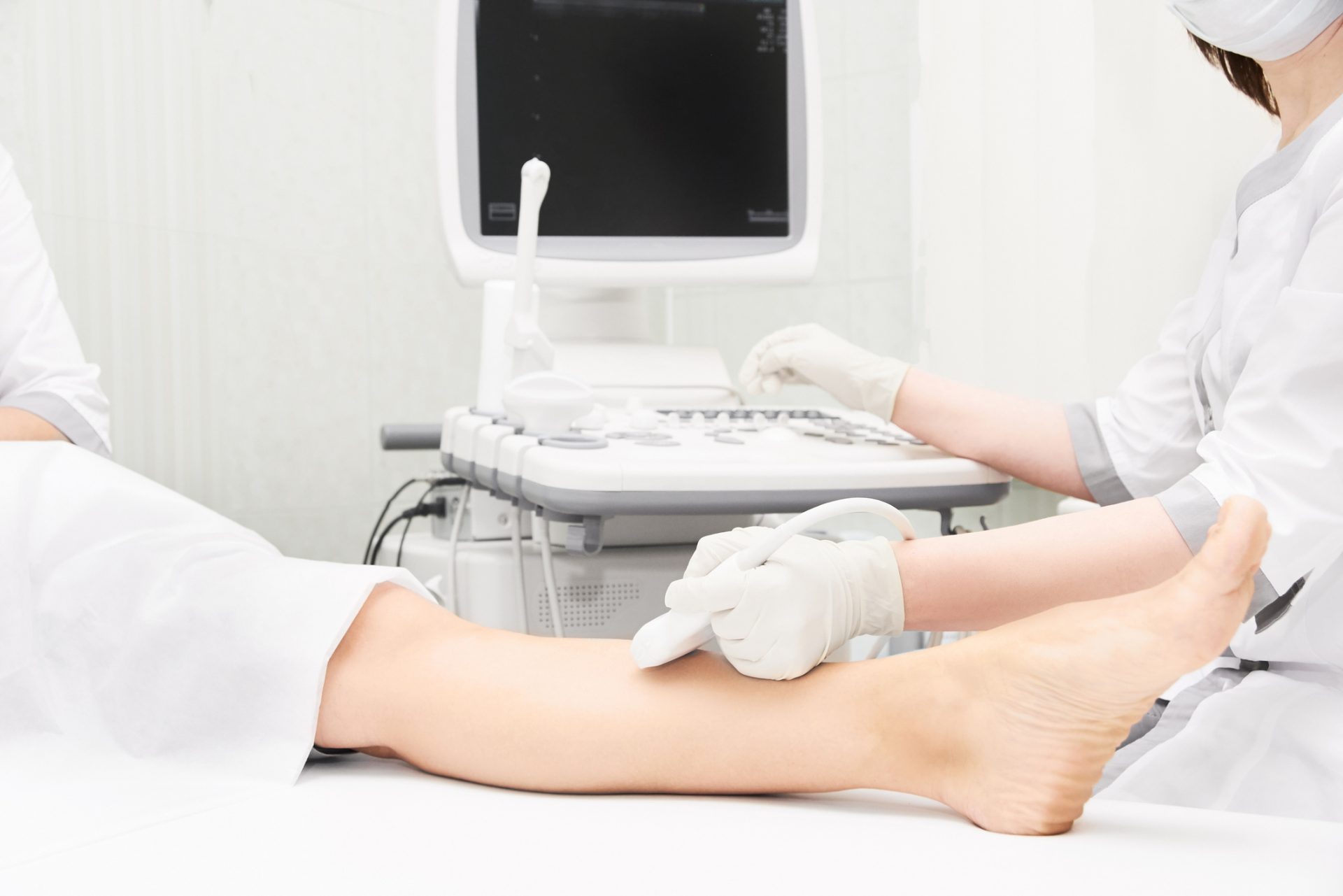Important! Call 911 if you are experiencing any symptoms of a heart attack.
Venous Insufficiency Evaluation & Treatment


Venous Insufficiency Evaluation & Treatment
Chronic venous insufficiency (CVI) is a common but often underdiagnosed condition where the veins in the legs fail to circulate blood effectively back to the heart. Over time, this can lead to leg heaviness, swelling, skin discoloration, and even venous ulcers if left untreated.
At Bay Area Heart, we provide a comprehensive, step-by-step approach to identify and treat venous insufficiency using the latest non-surgical and minimally invasive therapies—all in the comfort of our outpatient office.

Screening & Diagnosis
- Initial screening begins with a questionnaire to assess symptoms and risk factors.
- Physical examination is performed to evaluate visible signs like swelling, varicose veins, or skin changes.
- Venous Reflux Ultrasound Study: A specialized Doppler ultrasound to detect valve malfunction and assess the severity of reflux and vein dilation in superficial and perforator veins.
Symptoms of Venous Insufficiency
- Leg heaviness or fatigue, especially at day’s end
- Swelling in ankles or lower legs
- Visible varicose or spider veins
- Skin darkening or irritation around the ankles
- Itching, cramping, or burning
- In severe cases, non-healing wounds or ulcers
Treatment Approach
We begin with conservative management, including:
- Compression stockings
- Weight loss and exercise guidance
- Pain management and leg elevation
If symptoms persist, we offer minimally invasive, office-based procedures:
Radiofrequency Ablation (RFA)
- A thin catheter is inserted into the diseased vein to deliver heat energy that closes the faulty vein.
- Local anesthesia is used; no stitches are required.
- Recovery is quick—most patients return to normal activity within a day or two.
VenaSeal™ Closure System
- A non-thermal, non-tumescent procedure using medical adhesive to seal the vein shut.
- No need for post-procedure compression stockings or anesthesia injections along the leg.
- Ideal for patients is sensitive to heat-based therapies.
Perforator Vein Treatment
- When deeper communicating veins contribute to reflux, we also evaluate and treat perforator veins as part of a complete venous management plan.
What to Expect: Before, During & After
Before, During & After
- Insurance pre-approval is typically required.
- Patients are given oral Valium before the procedure to help them relax.
- We advise the use of NSAIDs and antihistamines post procedure (if no contraindications) to reduce inflammation and itching.
- The procedure is performed in-office and typically takes under an hour.
- A follow-up ultrasound is scheduled within 48–72 hours to confirm closure.
- Patients should monitor symptoms like excessive pain, redness, swelling, or fever, and contact our office if they occur.
Diagnosis & Treatment of May-Thurner Syndrome
May-Thurner Syndrome (MTS) is a condition where the left iliac vein is compressed by the right iliac artery, leading to obstruction of blood flow from the leg and increased risk of deep vein thrombosis (DVT).
Epidemiology & Symptoms
- More common in young to middle-aged women
- Can be asymptomatic or cause:
- Chronic left leg swelling
- Leg heaviness or discomfort
- Pain with prolonged standing
- Recurrent DVT or non-healing ulcers
Diagnosis & Advanced Treatment
At Bay Area Heart, we diagnose MTS using intravascular ultrasound (IVUS) and perform stenting procedures in our outpatient Ambulatory Surgery Center (ASC). IVUS allows for precise imaging of the vein from inside the vessel and accurate stent placement to relieve the compression and restore normal blood flow.
Bay Area Heart
Bay Area Heart provides complete vein care with expert diagnosis, state-of-the-art treatment, and follow-up—right in your community.

